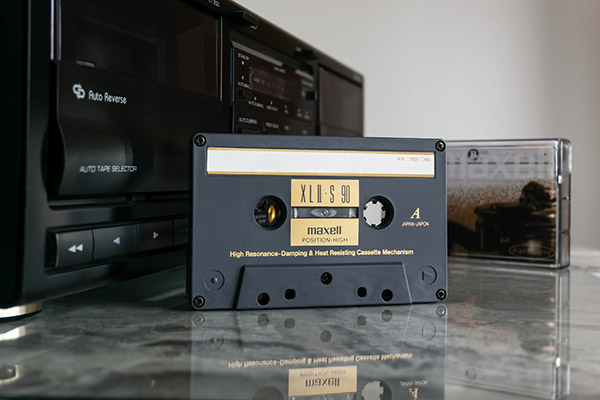Tale of the Tape: Spotlight on Maxell, the Origin of the Blown-Away Guy, and the Comeback of Cassettes
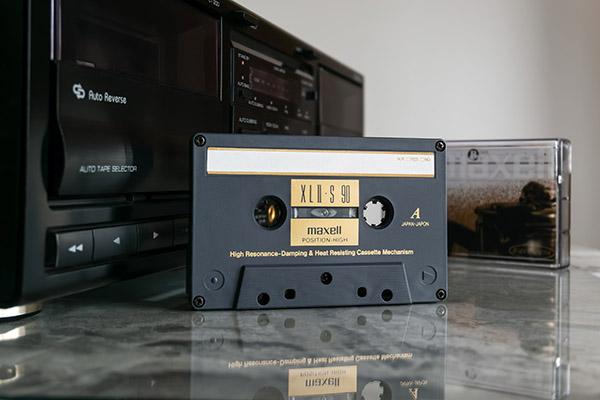
Look, I completely understand our romance, nostalgia, and undying love of the vinyl LP. In popular culture, countless movies and TV shows focus on the tactile moment when the needle touches that luxurious black groove, and the scene is set. One of our favorite vinyl-adjacent formats, the cassette tape, has never really held that vaunted position in the cultural archives, however. Well, except for the iconic, climactic scene of Lloyd Dobler (John Cusack) holding that boombox over his head in Cameron Crowe’s 1989 romantic comedy Say Anything. . . — which could very well be the most celebrated moment representing the power of cassettes on film.
That said, I can type out the phrase “Blown-Away Guy,” and the imagery those three words instantly conjure shows that what they represent stands out in our cultural archives as one of the most revered, copied, and oft-imitated images for the entire audio industry — and we can thank Maxell for initiating that response.
In the world of technology and media, the name Maxell has long become synonymous with high-quality recording products, especially when it comes to cassette tapes. Though today’s analog world is rightfully dominated by turntables and the vinyl movement, cassettes are enjoying a somewhat unexpected renaissance — and Maxell, a brand once at the forefront of that medium, also happens to have a rich history intertwined with the rise, fall, and resurgence of cassettes. Let’s rewind a bit to see how it all came to pass.
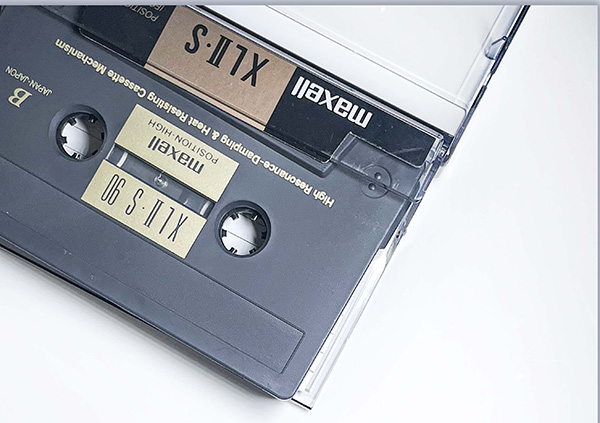
MTP: Magnetic Tape Pioneers
Maxell, which is short for “Maximum Capacity Dry Cell,” was founded in Japan in 1960 as a division of Nitto Electric Industrial Co., Ltd. Initially, the company focused on manufacturing dry-cell batteries — hence, the mashed-up brand name — where it gained a solid reputation. However, Maxell’s real global recognition came after introducing their first magnetic audio tape that focused on high fidelity playback in 1962.
The following decades were the golden era of cassettes, and Maxell in turn became a household name. In 1974, Maxell introduced the UD (Ultra Dynamic) cassette tape series, and that product became a standard for high-fidelity audio recording. After introducing metal-particle cassettes in the 1980s, Maxell tapes were praised for their durability, consistent quality, and superior sound fidelity, making them popular among audiophiles and professional sound engineers alike. Maxell not only solidified their reputation in the consumer market, but they also became a trusted brand in the recording industry as well. And then there was (orchestral music swell, please) . . . the Blown-Away Guy.
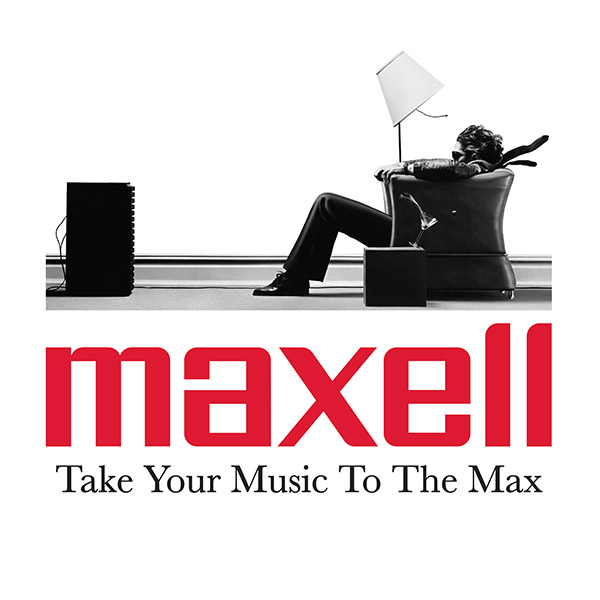
Maxell’s indisputably brilliant advertising moment came with a simple image. Their iconic Blown-Away Guy ad from the 1980s remains one of the most memorable symbols of the cassette era. I can’t imagine anyone reading this who isn’t already quite familiar with the poster, and most self-respecting music enthusiasts of that era likely also had it hanging in their music room. Of late, we’ve seen an uptick of interest in the ad’s original imagery, and have charted its surging usage in memes, as well as its ongoing deployment in other social-media usage.
[AP editor Mike Mettler adds: My own personal/professional avatar, which I’ve employed online for over a decade and the one you see whenever I post anything in our Comments sections, shows me in a fully authorized homage/recreation of that infamous ad — a story for another time.]
How did this visual-audio iconography come to fruition? Glad you asked. The Blown-Away Guy ad campaign was created in 1979 by the advertising firm Scali, McCabe, Sloves, for Maxell’s U.S. division. The campaign was originally designed for print — but it later expanded into television commercials, making the imagery even more internationally famous.
The concept of the campaign was simple: to visually represent how Maxell’s cassettes could reproduce sound with such a degree of high fidelity that it felt almost like being in the midst of the music itself. The blown-away effect conveyed the power of the music in an exaggerated but effective way, purporting to show that Maxell tapes could deliver an immersive listening experience unlike any other — whether it be the first time, or the hundredth time.
The iconic photo was taken by photographer Steve Steigman, who had a background in fine-art photography. The shoot took place in a studio with a minimal set, and it is believed the model for the campaign was a makeup artist who had once worked for David Bowie by the name of Jac Colello (though others have since laid claim to being the man in question). The featured Le Corbusier LC2 chair was a true high-end piece of furniture, chosen to convey a sense of sophistication and modernity. And that man in the chair was posed in a way that made it seem like he was gripping its arms for dear life, giving the scene an added dynamic energy.
Interestingly, in the print ads, the blowing effect was created without any actual wind being involved. Instead, Steigman and his team used strategic placement of the man’s scarf and other props (and an abundance of hair product!) to give the illusion the man was literally being blown away by the sound.
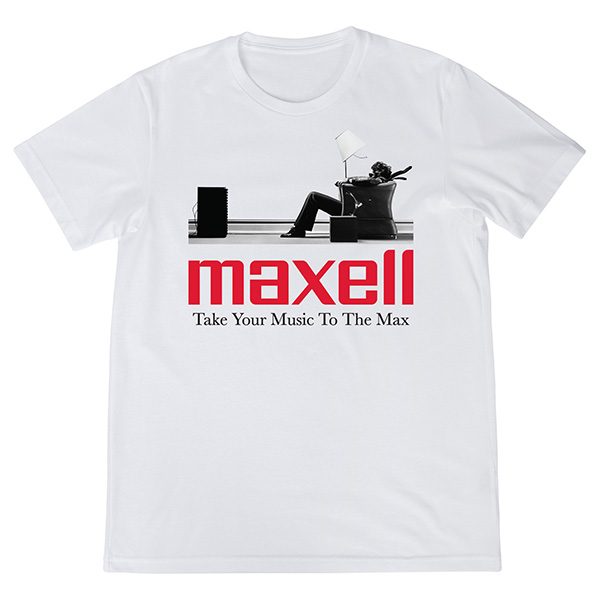
The poster made such an impact that TV commercials — and other image-related merchandise, as seen above! — followed, including a UK campaign with Bauhaus lead vocalist Peter Murphy in the chair. Different countries used different music selections for that first blast of sound, though Wagner’s “Ride of the Valkyries” and Mussorgsky’s “Night on Bald Mountain” are probably the two selections utilized that are best remembered by many of us. As if the Blown-Away Guy couldn’t be any cooler, the moment he reaches down to save the martini glass from spilling off the table moved that cocktail from being viewed as a representation of snobbish elitism to a more acceptable, oh-so-hip status.
The entire ad campaign captured the excitement of what cassette technology could do for you, and it also cemented Maxell’s image as an industry leader. The ad resonated so strongly because it appealed to both audiophiles and more casual music listeners alike. Whether you were someone who meticulously built a high-end sound system or someone who just loved the music, the Blown-Away Guy represented the idea that Maxell tapes could provide a superior listening experience for, well, everyone — until they didn’t.
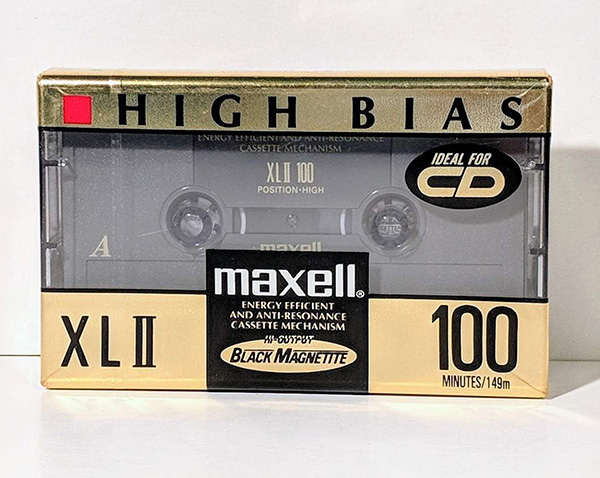
The Cassette Decline
By the late 1980s and early 1990s, digital formats led by the CD began to take over the music industry, gradually phasing out the use of cassettes (and the dominance of our beloved vinyl). CDs offered what many felt at the time was superior sound quality and durability. The rise of MP3 players, downloading/ripping, and streaming services in the early 2000s — even in lieu of their inferior sound quality — further sealed the fate of the cassette’s status as a mainstream format.
Relative to that drop, the last car produced with an in-dash cassette deck was the 2010 Lexus. While some niche users and collectors still held onto cassettes and retained the players in their vehicles, the format seemed destined for permanent obsolescence, as the instant gratification of random access to music took over the mainstream listener’s playback preference. For many ensuing years, cassettes were relegated to the realm of nostalgia, with only small, dedicated groups of collectors, DJs, and underground music scenes continuing to use them. And then another consumer shift began to take hold.
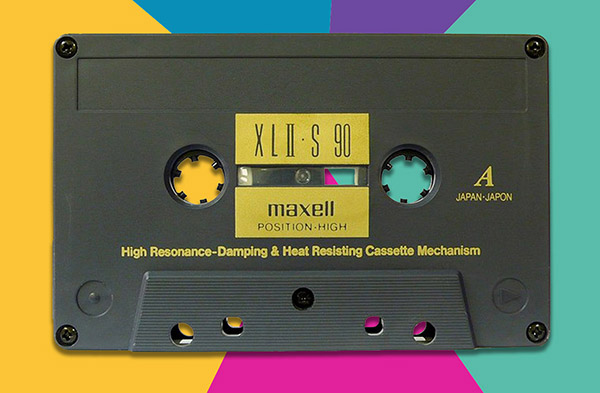
The Cassette Resurgence
Somewhat unexpectedly, cassettes began to experience a resurgence in the 2010s. This trend was initially driven by nostalgia, with Gen Xers and Millennials seeking to reconnect with the physical media of their youth, or at least with their parent’s collections. Similar to the appeal of vinyl, the tactile nature of cassettes — the act of holding a tape, tightening its spool with a pencil, inserting it into a deck — offered an experience that digital formats just could not replicate. As with our beloved vinyl, there’s a sense of intentionality and interactivity with cassettes that is missing with the instant-access world of streaming.
The return of cassettes is about more than just music. In an age where the internet makes music instantly available, the physicality of cassettes adds a layer of mystique. For many, cassettes offer a nostalgic trip back to the days of sitting in a car and pressing play, creating physical mixtapes, listening to entire albums by way of auto-reverse, and not having the easy convenience of instantly being able to skip tracks. That analog sound — albeit even with slight imperfections, like tape hiss and distortion — also contributes to the charm and warmth that cassette aficionados enjoy.
Additionally, the cassette’s limited playtime, usually around 30 minutes per side (although manufacturers began testing overall tape-time limits in the CD age), encourages focused listening. Unlike digital playlists that can stretch on endlessly, cassettes (again, like vinyl) demand attention and patience. In a fast-paced world of instant gratification, the slower, more deliberate pace of cassette playback resonates with listeners who want to immerse themselves in music as an experience rather than a background activity.
The resurgence of cassettes was further propelled by the rise of independent and underground music scenes, particularly in genres like experimental music. Small bands and boutique artists began releasing their music on cassettes as a way to stand out from the digital noise, and appeal to a focused, niche audience. Tapes are relatively inexpensive to produce and reproduce compared to vinyl, and they also offer an aesthetic that appeals to independent musicians, economically aligning them with the ever-growing analog movement. Even heritage artists have gotten into the act by including cassettes alongside color-vinyl options as part of their new-release and/or catalog-reissue campaigns.
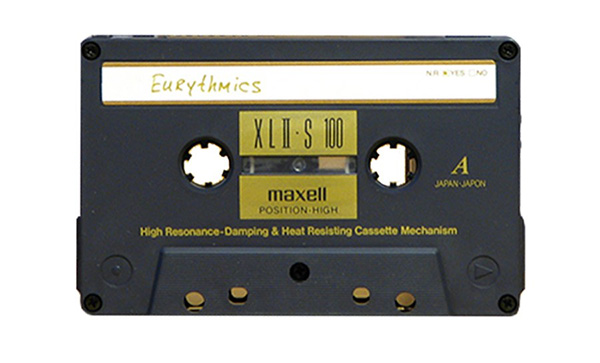
The Rewind, and the Fast-Forward
Maxell, along with a few other companies like TDK and Sony, have been key players in this cassette resurgence. For their part, Maxell tells us they never stopped producing cassettes, and, in recognizing the tape resurgence, have launched new cassette-centric campaigns. With a growing number of audiophiles, collectors, and newbies seeking out quality tapes, Maxell’s legacy of producing reliable, high-fidelity products has been a crucial response. Despite other companies abandoning the format, Maxell says their continued commitment to cassettes enabled them to be well-positioned to be a prime, quality-product provider for this growing trend.
The fact is, a good number of collectors, DJs, and enthusiasts continue to seek out Maxell-branded cassettes for their durability and sound fidelity. The company’s legacy as a leader in magnetic-tape technology gives them an edge in a market where authenticity and quality are paramount. What was once considered a dead format has now become a symbol of vintage cool — and no one yet knows how long it will last, or far it will keep going.
Among the remaining cassette-producing titans, Maxell remains a trusted name for those looking to embrace the sound of the past, right here in the present. Now, where is my martini?
Author bio: Leslie Shapiro knows analog inside and out, going back to her days of working behind the boards as a trusted audio engineer. She has also been a longtime contributor to our sister site, Sound & Vision.
For more about Maxell, go here.
T purchase current Maxell UR90 and UR60 cassettes from the official Maxell Store on Amazon, go here.
